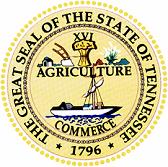 |
 |
 |
Charleston on the Hiwassee
at the intersection of Worth Street Northeast and Market Street Northeast, Charleston,
TN ,
USA
|
|

Tennessee State
Historical Marker
|
| |
| |
Charleston on the Hiwassee
A Strategic Crossing
Charleston, formerly Fort Cass during the ?Trail of Tears? (Indian removal of 1838), was strategically important in the military struggle for East Tennessee. The East Tennessee and Georgia Railroad bridge here, the line's only crossing on the Hiwassee River, made it a tempting target. Union loyalists burned it on November 8, 1861, and Union and Confederate forces later damaged it numerous times after it was rebuilt. The 1861 bridge burnings prompted Confederate authorities to tighten their military control over East Tennessee. When retreating Confederate troops damaged the bridge in November 1863, Union Gen. William T. Sherman was compelled to spend the evening of November 30 in Charleston. Here he received orders from Gen. Ulysses S. Grant to take command of a column marching to relieve Gen. Ambrose E. Burnside during the Siege of Knoxville.
The Hiwassee Bridge crossing was not only significant as the connection between Chattanooga and Knoxville, but also played a role in defending Charleston. Desperate for supplies in the aftermath of the Battle of Missionary Ridge, two of Confederate Gen. Joseph Wheeler's cavalry divisions raided a Union wagon train of Col. Bernard Laibold on December 28, 1863. The 300 wagons were crossing the Hiwassee en route from Chattanooga to Knoxville. As Laibold's infantry defended the train Union Col. Eli Long's cavalry brigade crossed the river and charged the Confederates. Routed, the Confederates retreated to Dalton, Georgia. The Charleston Cumberland Presbyterian Church was used as a hospital to treat the wounded. The Union army occupied Charleston for the rest of the war and built two blockhouses on each side of the river to protect the bridge.
?I have given the rebel General (Joseph) Wheeler a sound thrashing this morning.?
Col. Bernard Laibold, 2nd Missouri Infantry
Tennessee Civil War Trails
Last updated: 2/14/2015 15:17:00 |
|
|
| |
|
Related Themes: C.S.A., Confederate States of America, Confederacy, Union States
Explore other
Tennessee Civil War Historical Markers.
|
| |
|
|
|
|
|


